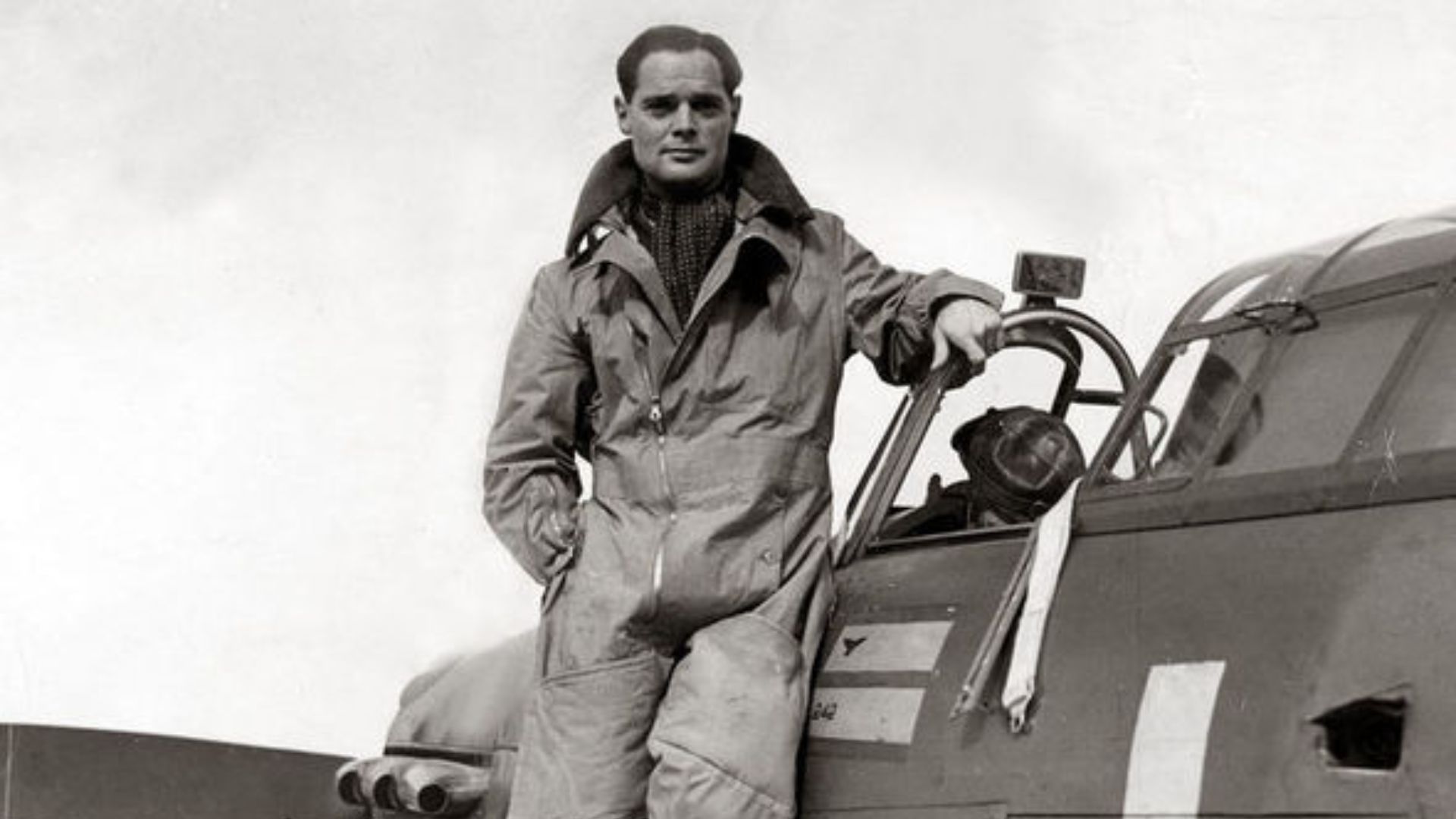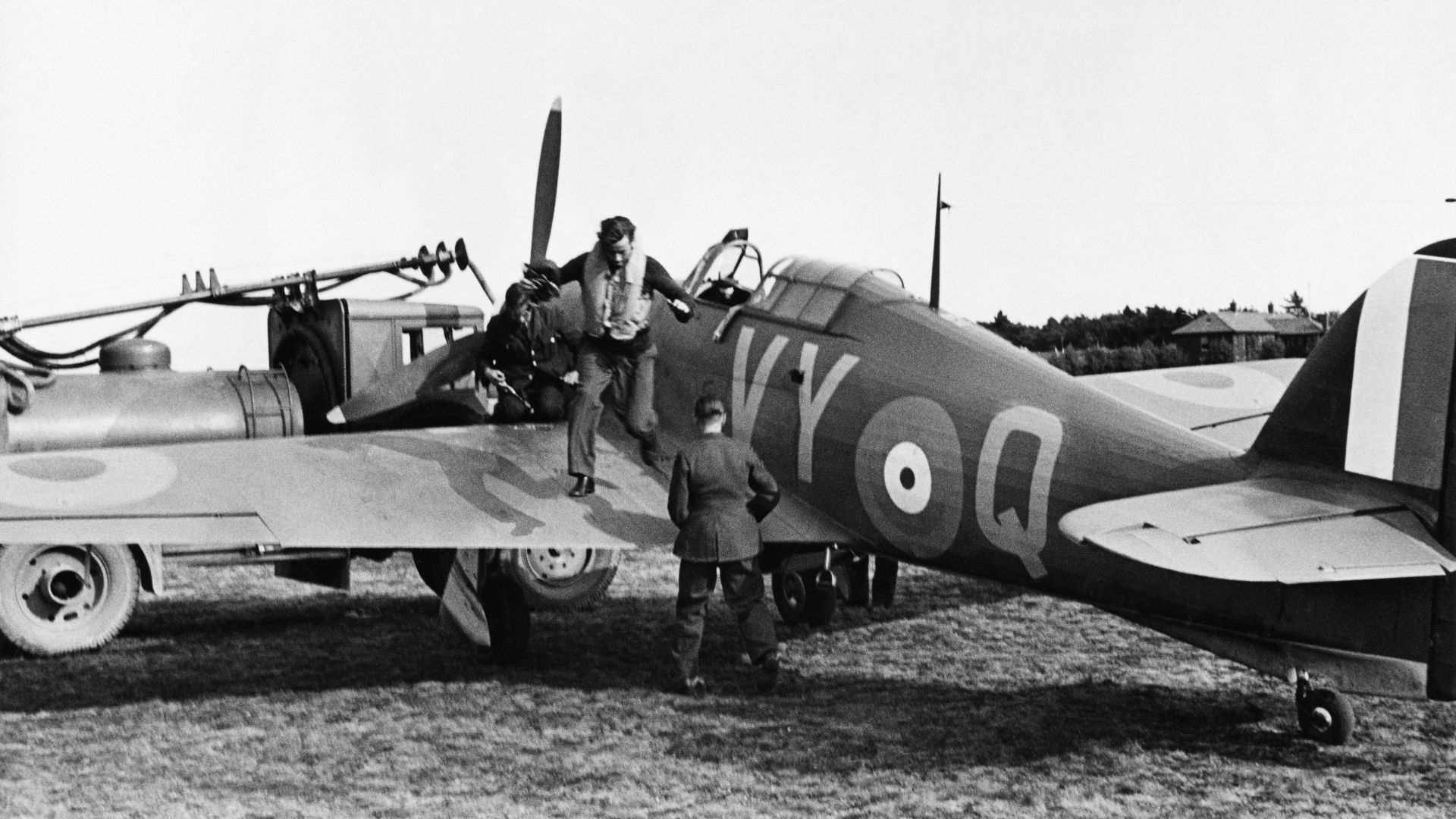 United Kingdom Government on Wikimedia
United Kingdom Government on Wikimedia
Most people would consider losing both legs a career-ending catastrophe, especially if that career involved flying fighter planes at 400 miles per hour. Douglas Bader wasn't most people. After a 1931 aerobatics accident cost him both legs—one above the knee, one below—he fought his way back into the cockpit and became one of the Royal Air Force's most celebrated pilots during World War II. His story sounds like fiction. It's not.
The Crash That Should Have Ended Everything
On December 14, 1931, Bader was performing at an air show near Reading, attempting low-level aerobatics in his Bristol Bulldog biplane. He clipped the ground during a roll, and the impact was devastating. His right leg was severed immediately, and his left was so badly mangled that it had to be amputated above the knee. Doctors gave him a 50-50 chance of surviving the night.
Despite the odds against him, he survived. Eventually, he even relearned to walk using the primitive aluminum and leather prosthetics of the 1930s. Six months after the accident, Bader was not only walking but driving a car with hand controls he'd rigged himself. The RAF, however, wasn't impressed and medically discharged him from service.
Fighting His Way Back Into the Sky
 Unknown authorUnknown author on Wikimedia
Unknown authorUnknown author on Wikimedia
Bader spent the next eight years working a desk job at an oil company, quietly seething. When World War II broke out in 1939, he saw his chance to take to the skies once again. He pestered the Air Ministry relentlessly, arguing that his prosthetic legs wouldn't affect his ability to fly and it might even be an advantage in high-G maneuvers since he couldn't black out from blood pooling in his legs.
After proving he could still fly during a test flight, Bader was reinstated in November 1939. By June 1940, he was commanding 242 Squadron during the Battle of Britain, leading Canadian pilots in combat against the Luftwaffe. His tactics were aggressive, his leadership style demanding, and 242 Squadron became one of the top-scoring units in Fighter Command.
Twenty-Two Confirmed Kills
Bader's official tally stood at 22 enemy aircraft destroyed. He flew Hurricanes initially, then Spitfires, and his combat record speaks for itself. He developed the "Big Wing" theory, assembling large formations of fighters rather than sending up small groups. This tactic was controversial among RAF leadership. Air Vice-Marshal Trafford Leigh-Mallory supported it; others thought it wasted time scrambling larger formations.
The debates about tactics miss the larger point: a double amputee was leading combat missions and downing German fighters. That alone was extraordinary. Bader's artificial legs apparently did help during high-G turns, allowing him to pull tighter maneuvers without losing consciousness, giving him an edge in dogfights.
Shot Down and Captured
 Press Agency photographer on Wikimedia
Press Agency photographer on Wikimedia
Bader's Spitfire was hit during a fighter sweep over France on August 9, 1941. He bailed out but lost one of his prosthetic legs in the process. The Germans who captured him were so impressed by his reputation that they allowed the RAF to drop a replacement leg via parachute during a bombing raid.
He spent the rest of the war as a POW, making so many escape attempts that the Germans eventually threatened to confiscate his legs. After liberation in 1945, Bader retired from the RAF as a Group Captain and went on to receive a knighthood. He died in 1982, having lived decades longer than those doctors expected on the eve of his 1931 accident.
The Legacy of Stubborn Refusal
Bader's story gets reduced to an inspirational caricature, which feels too simple. Bader was a complicated man, who was reportedly difficult, argumentative, and not particularly diplomatic. His autobiography and the 1956 film "Reach for the Sky" cemented his legend, though they glossed over his more abrasive qualities.
What matters is he refused to accept what everyone told him was impossible, proved them wrong repeatedly, and flew combat missions against one of history's most formidable air forces all while missing both legs. The sheer audacity of the man is no less astounding close to a century later.
KEEP ON READING

H.P. Lovecraft: Grandfather Of Eldritch Horror
Unknown authorUnknown author on WikimediaIf you’ve ever watched a movie,…
By Breanna Schnurr Nov 27, 2025
Einstein's Violin Just Sold At An Auction—And It Earned More…
A Visionary's Violin. Wanda von Debschitz-Kunowski on WikimediaWhen you hear…
By Ashley Bast Nov 3, 2025
This Infamous Ancient Greek Burned Down An Ancient Wonder Just…
History remembers kings and conquerors, but sometimes, it also remembers…
By David Davidovic Nov 12, 2025
The Mysterious "Sea People" Who Collapsed Civilization
3,200 years ago, Bronze Age civilization in the Mediterranean suddenly…
By Robbie Woods Mar 18, 2025
20 Inventors Who Despised Their Creations
Made It… Then Hated It. Inventors often dream big, but…
By Chase Wexler Aug 8, 2025
20 Incredible Items In The British Museum People Say Were…
Mystery In History. The mighty halls of the British Museum…
By Chase Wexler Sep 8, 2025
